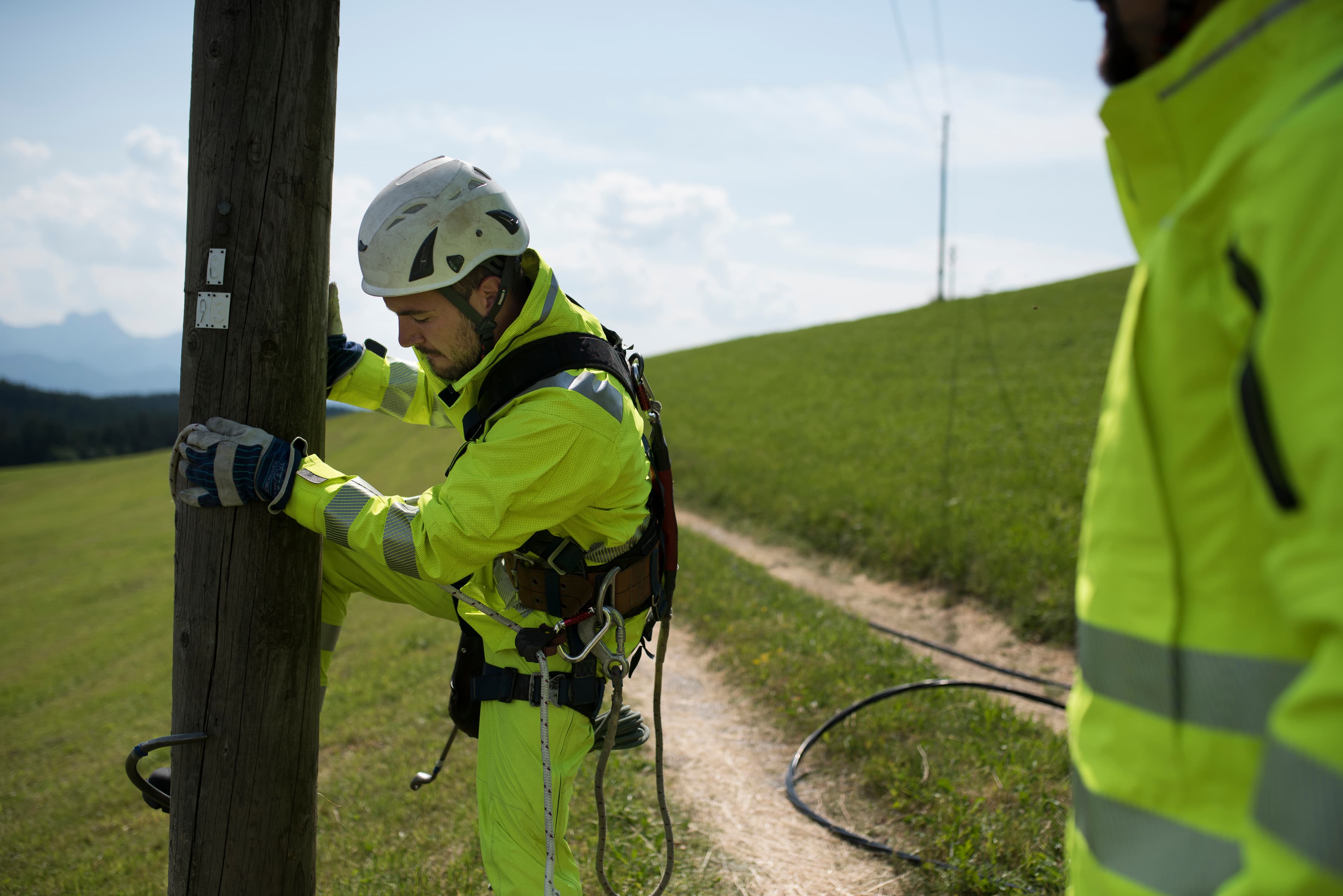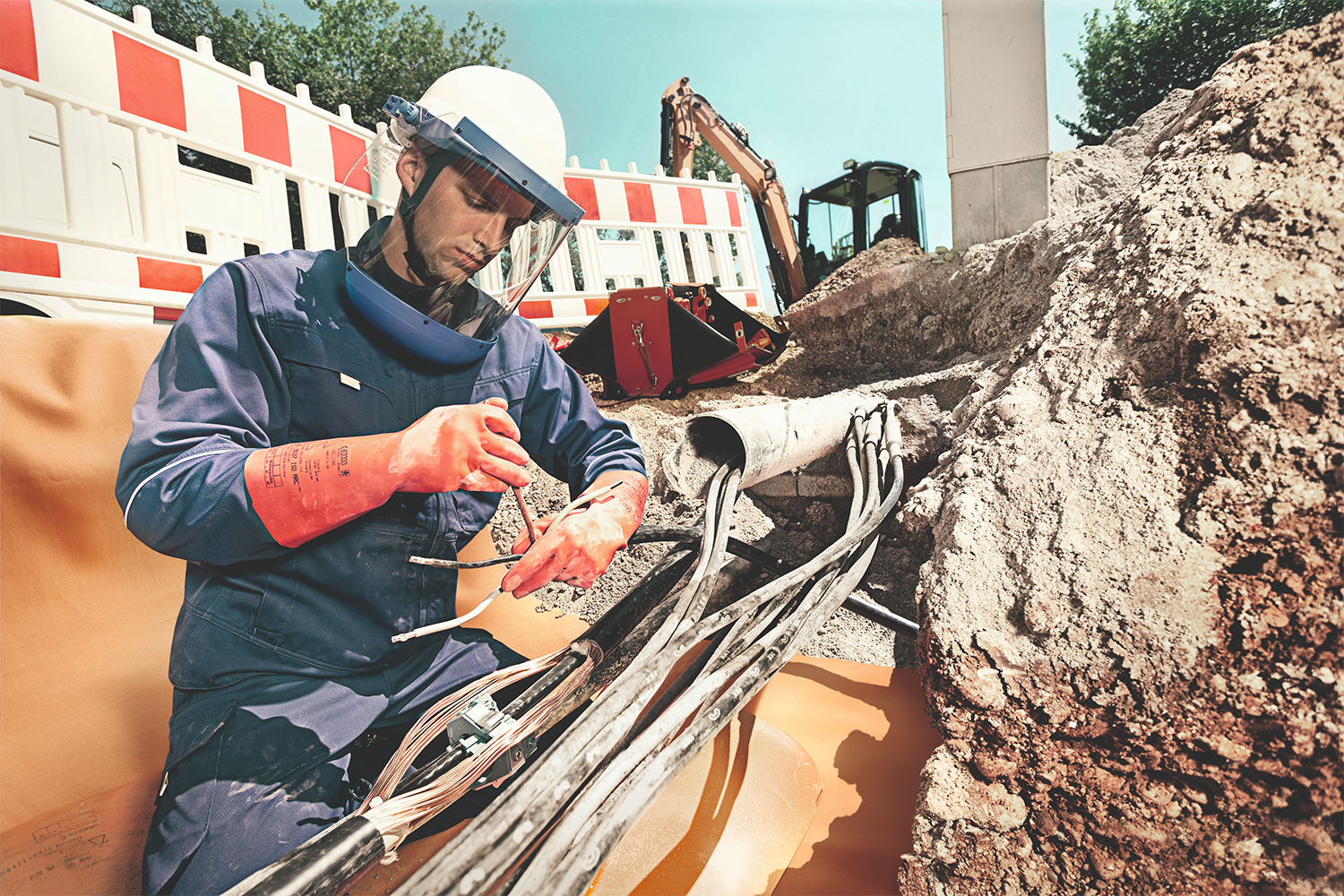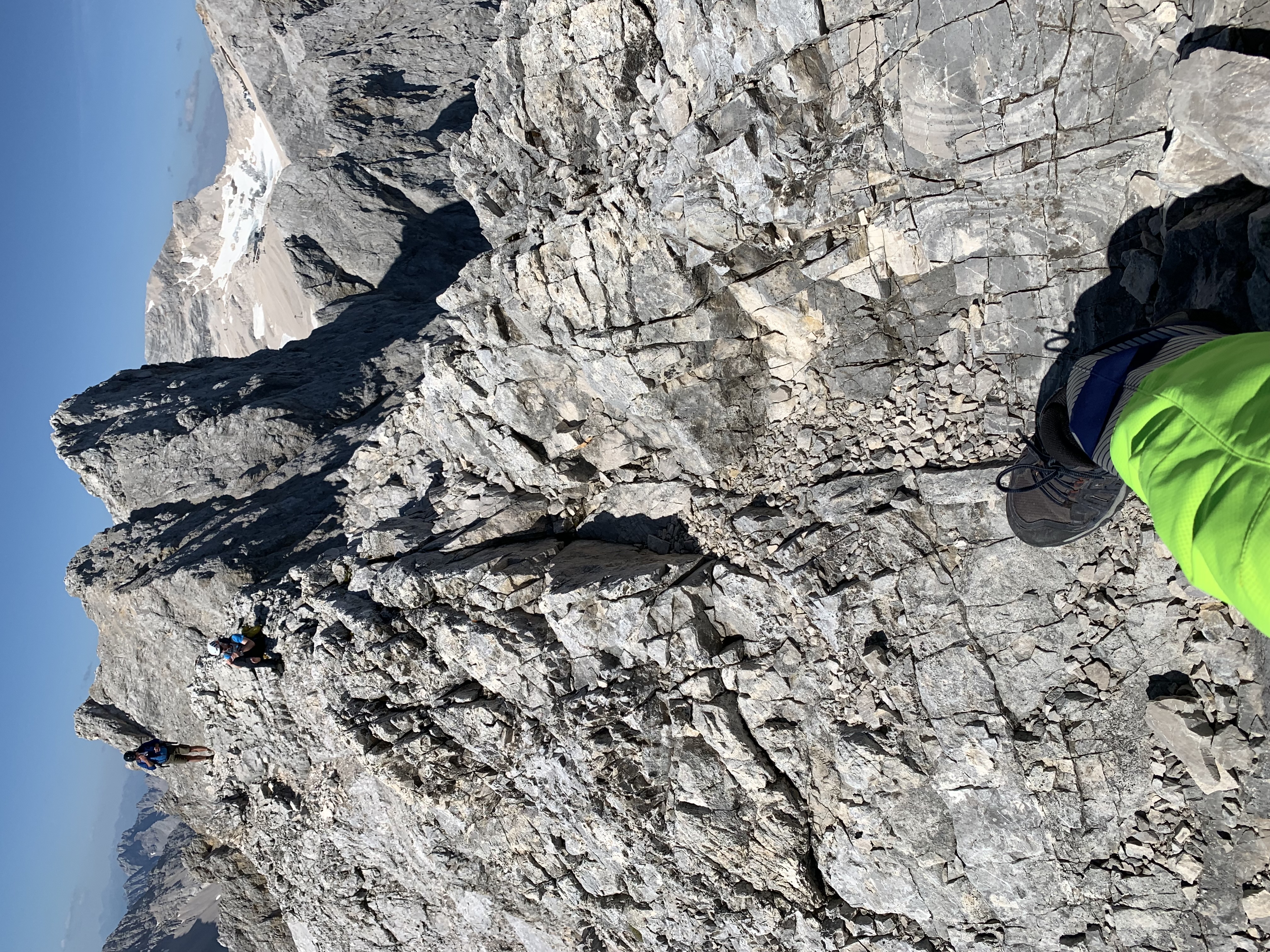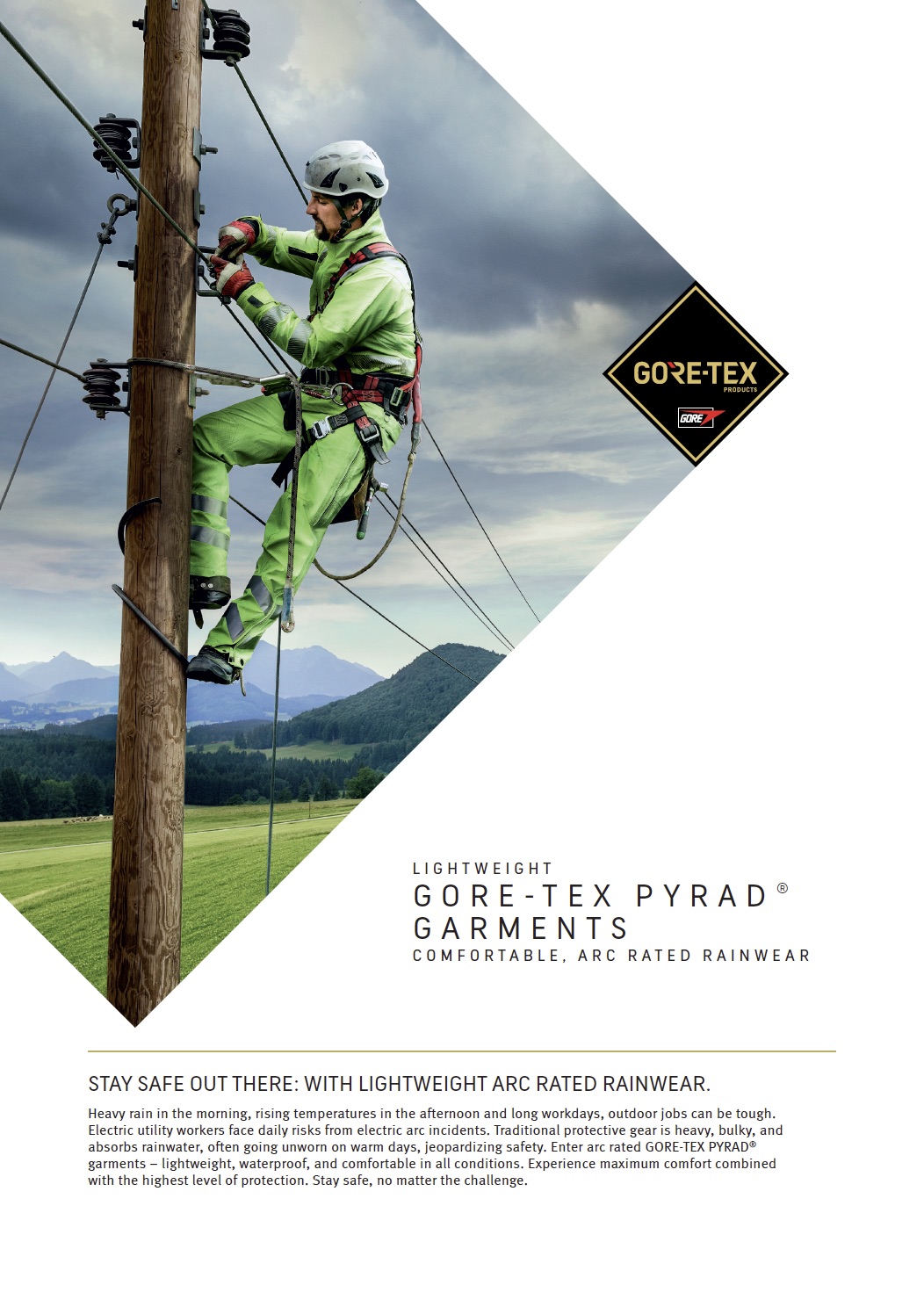The booming electrification of everything requires customized PPE for those who make it work.
In a world racing toward a more sustainable and electrified future, the landscape of society is undergoing a monumental transformation. The electrification of society is not merely a trend; it's a necessity, driven by the urgent need to combat climate change and reduce our dependence on fossil fuels. This means the adoption of electricity as the primary energy source for various applications and industries. In its wake come new professions that have one thing in common: The need of protection.

The electrification is paving the way for the emergence of new industries, reshaping our economic landscape with innovative businesses and new job opportunities. The renewable energy sector, in particular, is experiencing unprecedented growth, ushering in industries such as solar and wind power generation, battery and electric vehicle manufacturing and data centers.
The International Renewable Energy Agency (IRENA) suggests that the renewable energy sector could employ up to 42 million people globally by 2050. Another analysis by the World Economic Forum projects that the shift to electric vehicles could create up to 11 million new jobs by 2030, with potential growth in manufacturing, infrastructure development, and related services.
New Professions in the Electrified Era
With this electrification surge comes the birth of new professions - those charged with powering our world with electricity. And the very nature of electrified professions demands a shift in how we think about workplace safety.

- Operating within the realm of high-voltage equipment, workers are exposed to the imminent dangers of electric shock, arc flashes, arc blasts and explosions.
- The use of high-voltage batteries in electric vehicles (EVs) can lead to the development of new types of fires, requiring specialized methods for detection and extinguishing.
- The use of hazardous chemicals in battery manufacturing introduces the risk of chemical splashes.
- Contact with hot equipment and heat conductive materials poses a significant risk of burns.
- Workers in power plants or substations may be susceptible to heat-related illnesses due to high ambient temperatures.
- Workers operating wind farms, often offshore, face exposure to unpredictable and extreme weather conditions including high winds, cold and extensive wet conditions.
Combined risks require innovative protection solutions
It is not only the risks themselves, but their combination that poses an additional challenge. For instance, the manufacturing of car batteries with high density often uses chemicals such as lithium, cobalt, nickel, and other hazardous material compounds, making the batteries highly flammable and explosive if not handled properly. Workers are potentially also exposed to extremely dangerous arc flash incidents. According to industry experts, highly dangerous incident energy of up to 29 cal/cm² is generated when attaching batteries with the engine in EV car manufacturing. When installing charging stations for EVs, the energy can even exceed 50 cal/cm². Direct contact with these incident energies would end fatally if workers were not protected sufficiently.
Renaissance of Direct Current (DC)
One hazard that stands out in all of the new professions is the renaissance of direct current (DC) as the dominant electric current in new applications and industries: Many renewable energy sources, such as photovoltaics and wind power, initially generate DC. It can be more efficient for transmitting electricity over very long distances, such as from offshore wind farms, because it has fewer line losses. And because electric vehicles need DC to charge their batteries, the charging infrastructure and on-board systems of the vehicles are based on DC power technology.
"It all starts with the needs of workers to ensure their maximum protection. Across all electrified industries, extensive research is underway to better understand the risks associated with DC. This includes reviewing emerging standards and conducting risk assessments in the field," says Miguel Calixto, Product Specialist for GORE-TEX Professional Fabrics. "We are working closely with electrical industry partners and health and safety experts to have a clear understanding of the new hazards and risks in the workplace and the safety requirements for appropriate PPE to keep electrical workers safe."
Sensitizing employees for the risks associated with DC
Moreover, increasing awareness across the workforce about the dangers associated with DC is crucial. "Contact with DC is more dangerous than alternating current (AC)," explains Dr. Oliver Polanz, Head of Health, Safety, Environment, and Quality at SPIE Germany and Central Europe. "DC can cause continuous muscle tetanus, making it more likely to “freeze” a victim in a shock scenario. Thus, we make an extra effort to sensitize and train our employees for DC-related dangers."

Forming a stable carbon layer to protect electrical workers
With all understanding and protection, it is the technology in several millimeters of garment that to make the new work more productive and improve employee´s safety when potentially exposed to electrical hazards. GORE-TEX Professional Fabric’s PYRAD® product technology offers bespoke protection for workers in electrified industries: The technology is based on a physical effect and consists of countless small reactive dots homogeneously distributed over the membrane. When the dots are strongly heated by a sudden flame or arc incident, they react and expand by more than 10 times their original size to form a stable, gapless carbon layer that effectively inhibits heat flow.
Combined protective technologies for mixed hazards

Since workers are often confronted with a mix of hazards, many Gore product technologies combine different ways to protect them and provide comfort at the same time. "Working on an offshore wind farm requires extreme weather protection, full hazard protection and the ability to move in confined spaces while being physically active. Working at the side of the road in 30°C has the same hazard protection requirements, but different weather protection. This requires customized PPE depending on the conditions," says Alexandra Fiss, Strategic Marketing at GORE-TEX Professional Fabrics. "Any gain in breathability, weight and freedom of movement has a direct impact on worker safety, morale and motivation." As we chart our course toward an electrified future, it's important to keep sight of the human element - the men and women who are driving this transformative change. More research needs to be done on the hazards that come with it to protect those who make it work in their daily jobs. Not only for their safety, but to enable society's journey to a decarbonized world.




 The greatest environmental impact in a lifecycle of personal protective equipment occurs during production and distribution. Extending longevity, or useful life, of a product is therefore the single most influential factor to improve its environmental impact. This is especially true if a product can be repaired and re-used again. Following this spirit, Wenaas, an international supplier of workwear solutions from Norway, together with GORE-TEX Professional, developed a smart repair kit for arc rated GORE-TEX PYRAD® personal protective equipment (PPE) to help their customers prolong the garments' product life.
The greatest environmental impact in a lifecycle of personal protective equipment occurs during production and distribution. Extending longevity, or useful life, of a product is therefore the single most influential factor to improve its environmental impact. This is especially true if a product can be repaired and re-used again. Following this spirit, Wenaas, an international supplier of workwear solutions from Norway, together with GORE-TEX Professional, developed a smart repair kit for arc rated GORE-TEX PYRAD® personal protective equipment (PPE) to help their customers prolong the garments' product life.
 The repair kit consists of four GORE-TEX PYRAD® fabric patches: two round patches (diameter 7,6 cm) and two square patches (10x5 cm). These allow for the repair of small and medium-sized punctures or tears of the fabric — for larger damages two or more patches can be combined. The kit comes in two color versions: fluorescent yellow and navy blue. No special skills are involved to repair the garment: the patches have flue on the backside — a short instruction video shows that all that's needed is a hairdryer and/or an iron to permanently attach the patch. After repair, the risk of harmful incidents is avoided by using a protection patch made of GORE-TEX PYRAD® arc-protective materials and can be washed as usual. And in the rare case the fabric is damaged in the exact same place again, a new patch can even be applied over the previous patch. "The feedback from our customers is very positive", concludes Lien, "the repair kit absolutely solved their problem."
The repair kit consists of four GORE-TEX PYRAD® fabric patches: two round patches (diameter 7,6 cm) and two square patches (10x5 cm). These allow for the repair of small and medium-sized punctures or tears of the fabric — for larger damages two or more patches can be combined. The kit comes in two color versions: fluorescent yellow and navy blue. No special skills are involved to repair the garment: the patches have flue on the backside — a short instruction video shows that all that's needed is a hairdryer and/or an iron to permanently attach the patch. After repair, the risk of harmful incidents is avoided by using a protection patch made of GORE-TEX PYRAD® arc-protective materials and can be washed as usual. And in the rare case the fabric is damaged in the exact same place again, a new patch can even be applied over the previous patch. "The feedback from our customers is very positive", concludes Lien, "the repair kit absolutely solved their problem." Jonas Andersson, sales Associate at GORE-TEX Professional says: "Our sustainability approach is about providing exceptional long-lasting products while at the same time reducing the environmental footprint. The idea of the repair patch is to avoid further tear propagation which could result in losing the required protection. And through these patches, users can contribute to our effort and do something meaningful."
Jonas Andersson, sales Associate at GORE-TEX Professional says: "Our sustainability approach is about providing exceptional long-lasting products while at the same time reducing the environmental footprint. The idea of the repair patch is to avoid further tear propagation which could result in losing the required protection. And through these patches, users can contribute to our effort and do something meaningful." about wenaas
about wenaas




 Especially when the consequences of a non-used PPE can result in severe injury or death, the only proper PPE is the PPE that is worn and ideally loved by the users.
Especially when the consequences of a non-used PPE can result in severe injury or death, the only proper PPE is the PPE that is worn and ideally loved by the users.

























